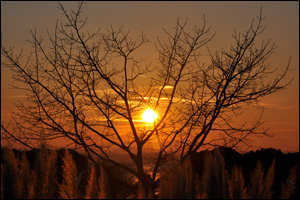 The web is a noisy place. There are countless numbers of people and organizations all competing for internet surfers’ attention. With a space that is so cluttered, how can you make your blog stand out against all the others and capture the attention of an impatient audience?
The web is a noisy place. There are countless numbers of people and organizations all competing for internet surfers’ attention. With a space that is so cluttered, how can you make your blog stand out against all the others and capture the attention of an impatient audience?
If visitors don’t always have time to read a thousand words, don’t sweat it. After all, the fastest way to captivate an audience is with powerful imagery, especially as a hook to get them reading.
Here are some ways that photography can add value to and improve the quality of your blog:
Direct the Imagination
Even the best written content can seem bland when it stands alone without an image. Adding self-shot photos or stock photography to your posts will direct the reader’s imagination alongside of the written content to paint a more complete picture. Pictures are much more engaging than plain text and can invoke strong emotional responses in readers. Since memory is strongly tied to emotions, relevant images will help make your blog more memorable, entertaining, and engaging.
Give Your Blog a Reason to Show Up
Great written content alone often has the ability to rank well in search engines and spread like wildfire through the social sphere. Imagine the power of great copy matched with an intuitive photography selection that displays the story that the words tell. Creating humorous, helpful, interesting, or shocking images and memes that go along with your content will not only give your work a better chance of going viral, it will also give your blog a chance for more exposure through image search on search engines and social networks. After all, you do want more visitors, right?
Hook and Deliver
At most, you have a handful of seconds to capture a visitor’s attention before they decide to find another site that can deliver what they are looking for in a more convenient and obvious way. In addition to descriptive and relevant page titles and headings, pictures provide a quick and convenient way to help verify to the reader that your site indeed provides the solution to whatever it is that they seek. If you include multiple images in a post, try and strategically place a picture that is the most obviously related to the topic of the page above the fold. This will also help the picture get included in any summaries or reposts that might get truncated.
Stock Photos vs. Original Work
There are pros and cons to using both stock photos and original photography depending on what you normally write about and the topic of any given post. Some businesses strongly benefit from genuine photography over stock pictures like catering companies, graphic designers, landscapers, news, and others. Here are a few pros and cons for each:
Stock Photography
Pros:
- Fast and convenient for finding general pictures that can fit most blogs.
- Access to photography and scenery that would not make practical or financial sense to shoot yourself.
Cons:
- Some really specific image requirements can be hard to find as a stock photo.
- Other people often have access to the same images which can be seen on multiple websites across the web.
Original Work
Pros:
- Creative freedom to shoot photography to meet the needs of the content instead of searching for make-shift pictures that loosely fit.
- Quality photography helps build a professional image that improves brand reputation.
Cons:
- Original photograph requires planning, travel, and the hunt for the perfect shot.
- Photography has associated costs for quality supplies and equipment.
Conclusion: Whether you are a seasoned photographer or a blogger that is looking to improve user experience and retention, including images is a great way to improve your blog. Stock images and photography are easier than ever to get and integrate into your website, so there is no excuse to not get started.